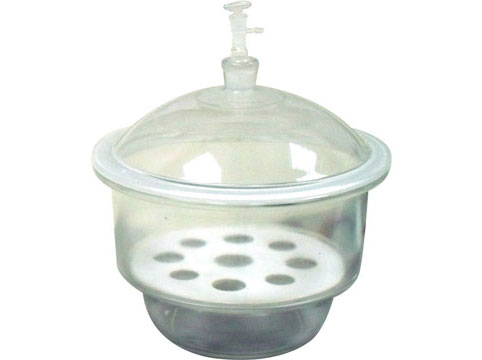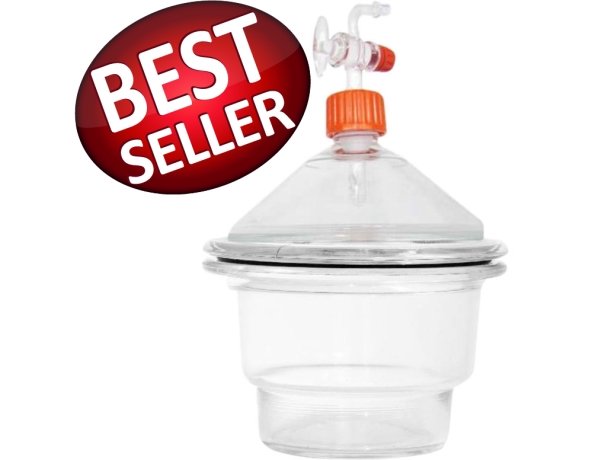A Pyrex Vacuum Desiccator is essentially a sealed container used to maintain a low-humidity environment within, protecting sensitive materials from moisture and humidity-induced degradation. Its applications span across various scientific disciplines, including chemistry, biology, and materials science.
Understanding the Components
A Pyrex Vacuum Desiccator typically consists of several key components. The lid, often made of sturdy glass, forms an airtight seal with the base to create the enclosed environment necessary for desiccation. The base houses the samples and desiccant material, while a vacuum gauge allows for monitoring of the internal pressure. Additionally, a stopcock enables controlled release of vacuum when necessary.
How to choose
Selecting the appropriate Pyrex Vacuum Desiccator involves careful consideration of several factors. Size matters, as the desiccator should comfortably accommodate your samples without overcrowding. Material quality, particularly the robustness of the glass, ensures durability and resistance to chemical corrosion. Features such as a reliable seal and sturdy construction are also crucial for long-term usability.
Operating Instructions
Operating a Pyrex Vacuum Desiccator involves a series of steps to create and maintain a vacuum. After securely sealing the desiccator, a vacuum pump is used to evacuate air from the chamber, lowering the internal pressure. It's imperative to monitor the vacuum gauge throughout the process to prevent overexertion. When it's time to release the vacuum, the stopcock is slowly opened to equalize pressure safely.

Maintenance and Care
Proper maintenance ensures the longevity and effectiveness of your Pyrex Vacuum Desiccator. Regular cleaning with mild detergents and distilled water helps prevent buildup and contamination. Storing the desiccator in a dry, dust-free environment when not in use further safeguards its integrity. Common issues like chipped glass or damaged seals should be addressed promptly to avoid compromising performance.
Tips for Maximizing Efficiency
To get the most out of your Pyrex Vacuum Desiccator, adopting proper usage techniques is paramount. Avoid overcrowding the chamber, as this can impede airflow and compromise desiccation effectiveness. Regularly inspecting and replacing desiccant material ensures optimal moisture removal, while proper storage prolongs the desiccator's lifespan.
Application
- Drying of Hygroscopic Materials: Pyrex vacuum desiccators are utilized to remove moisture from hygroscopic substances such as certain chemicals, powders, or samples. By creating a vacuum environment within the desiccator, moisture is effectively removed, allowing for the preservation or preparation of these materials without the interference of water.
- Storage of Moisture-Sensitive Samples: Many samples used in laboratory experiments are sensitive to moisture, which can degrade their quality or alter their properties. They are providing a controlled environment with low humidity levels, ensuring the stability and integrity of these samples during storage.
- Preparation of Anhydrous Compounds: In chemical synthesis, some reactions require anhydrous conditions, meaning conditions devoid of water. Pyrex vacuum desiccators facilitate the preparation of anhydrous compounds by providing a dry environment where water can be removed from reactants or solvents, thus enabling precise control over the reaction conditions.
- Moisture Content Determination: In analytical chemistry and material science, the moisture content of substances is often a critical parameter. They are employed in methods such as gravimetric analysis to accurately determine the moisture content of a sample by drying it under vacuum and measuring the weight loss.
- Preservation of Delicate Materials: Certain delicate materials, such as biological samples or historical artifacts, can degrade when exposed to moisture. They offer a means of preserving these materials by maintaining a dry environment, thereby preventing microbial growth, degradation, or other forms of damage caused by moisture exposure.
- Environmental Testing: Used in environmental testing procedures where maintaining specific humidity levels is crucial. They allow researchers to simulate different environmental conditions by controlling the moisture content of the test samples within the desiccator.
